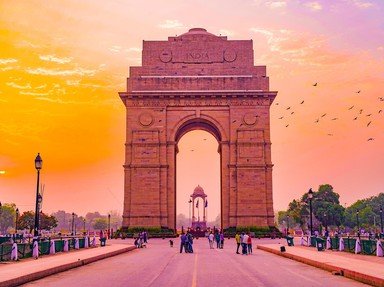Quiz Answer Key and Fun Facts
1. Who among the following was the chairman of the Drafting Committee of the constitution of India?
2. When did the Constitution of India come into into force?
3. Who among the following established the Dual Government in India ?
4. In which year was the Pitt's India Act passed by the British parliament?
5. Why was the Government of India Act of 1858 passed ?
6. Under which act was the Reserve Bank of India established ?
7. Which Act was the last pre-independence constitution of the British Raj?
8. Dr. Chakravarthi Rajagopalachari was appointed as the Governor-General of India after Louis Mountbatten.
9. The President of India selects how many members for the membership of the Rajya Sabha?
10. Who selects the members of the Lok Sabha?
Source: Author
rathigangadar
This quiz was reviewed by FunTrivia editor
bloomsby before going online.
Any errors found in FunTrivia content are routinely corrected through our feedback system.
